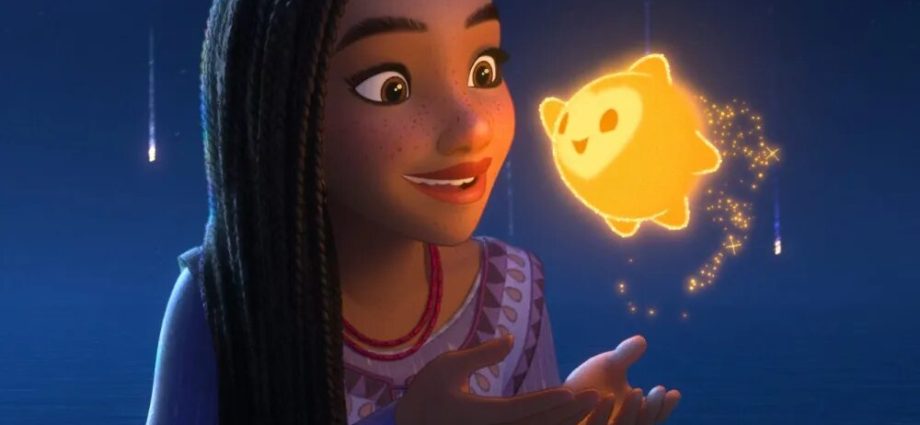Disney’s “Wish,” released on November 22, is set in the Kingdom of Rosas ruled by the sorcerer, King Magnifico, where all citizens are required to give up and forget a memory of their greatest
wish. It follows the protagonist, Asha, who hopes to apprentice for the King; however, after discovering his true motives, Asha rebels against the evil sorcerer by gathering her friends to reclaim the kingdom’s wishes and change Rosas’ future.
Before the film’s release, many fans who viewed the trailer heavily criticized
the movie, questioning the appearance of the unrendered animations and basic plot. Although the animation style appears simplistic at times due to more recent styles, I understand the perspective of making the movie feel like an old fairytale book aesthetic with a soft watercolor effect. The glowing animations in scenes with magic were visually appealing; however, the muted color palette proved to be
monotonous at times, especially when the plot was unengaging.
In terms of the plot, the movie did not provide any groundbreaking moments. There were overused tropes and characters, such as the comedic relief, a talking animal used in previous Disney movies like “Mulan” (Mushu the dragon) and “The Little Mermaid” (Sebastian the crab). Whereas these characters drove the plot in their movies, Valentino, the talking goat in “Wish,” provided no concrete purpose and his jokes often fell flat. Additionally, only Asha, the stale, dorky protagonist, and Magnifico, the cliche villain, were the significant characters, with all others being shallow, forgettable, and failing to add any value to the movie.
The movie was intended to be an ode to the studio’s hundredth anniversary and include elements of “classic Disney.” However, the plot was rigid, fitting into all other fairytale structures, and had predictable characters. For example, following in the footsteps of countless previous Disney characters such as Rapunzel from “Tangled” and Mirabel from “Encanto,” Asha has an exaggerated and, oftentimes, exasperating, goofy personality.
Another example of a predictable character is the villain, King Magnifico. Firstly, he has no interesting motive for his evil actions, with the motives being ambiguous and becoming void later in the film. If he had not already held a position of power, or his motives were explored more and he used his tragic backstory to manipulate other characters, there would be some merit to his actions.
A huge component of animated Disney movies is the music. With previous movies including
grand, musical-esque pieces with addicting melodies and full instrumentals, “Wish” was a disappointment in this aspect as well.
The music composers for this movie both have backgrounds in the pop industry, as evident from
the soundtrack. The songs lack the whimsical sound present in most Disney movies and emulate
a more hollow and modern style, which is ironic since the movie aimed to mimic classic Disney.
Considering its attempt to celebrate Disney, “Wish” included some noticeable easter eggs such as a reference to “Snow White and the Seven Dwarfs,” but the film itself lacked any major themes, something that made other Disney movies more compelling. By the end, I felt I had nothing to take away from it.
Usually, Disney films provide a life lesson or message of some sort, a valuable component absent from this movie. Ultimately, the movie tries to imitate hundreds of other Disney movies that do a much better job of what this one attempted to do.

